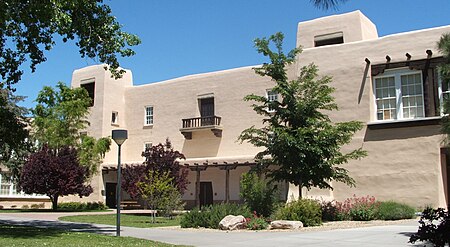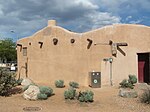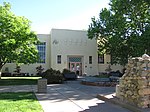Scholes Hall

Scholes Hall is the historic administration building of the University of New Mexico, located on the main campus in Albuquerque. It was the first of many buildings designed for the university by Santa Fe architect John Gaw Meem, who helped to cement the Pueblo Revival style as the "official" architecture of the campus. Built in 1934–36 with Public Works Administration funding, it is regarded as one of Meem's most notable designs.: 65 It is listed on the New Mexico State Register of Cultural Properties and the National Register of Historic Places,It is named for France Vinton Scholes (1897–1979), who was an American scholar and historian noted for his research on the history of New Spain, especially Spanish Yucatan and Southwestern United States.
Excerpt from the Wikipedia article Scholes Hall (License: CC BY-SA 3.0, Authors, Images).Scholes Hall
Roma Avenue Northeast, Albuquerque Nob Hill
Geographical coordinates (GPS) Address Phone number Website External links Nearby Places Show on map
Geographical coordinates (GPS)
| Latitude | Longitude |
|---|---|
| N 35.08532 ° | E -106.62357 ° |
Address
Scholes Hall
Roma Avenue Northeast 1800
87131 Albuquerque, Nob Hill
New Mexico, United States
Open on Google Maps









